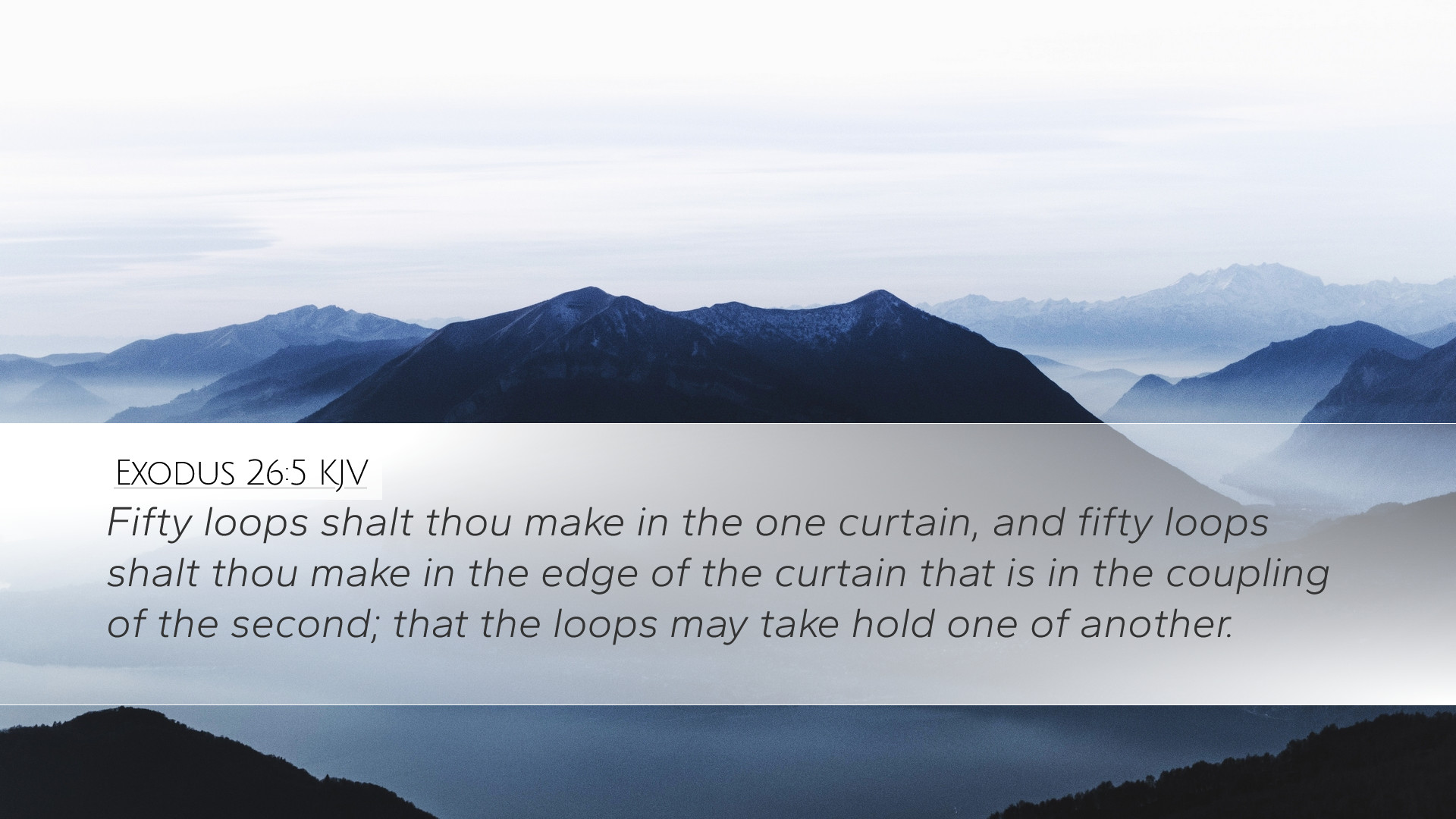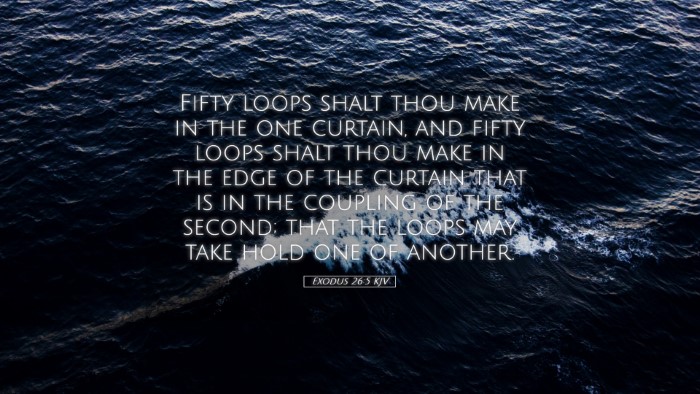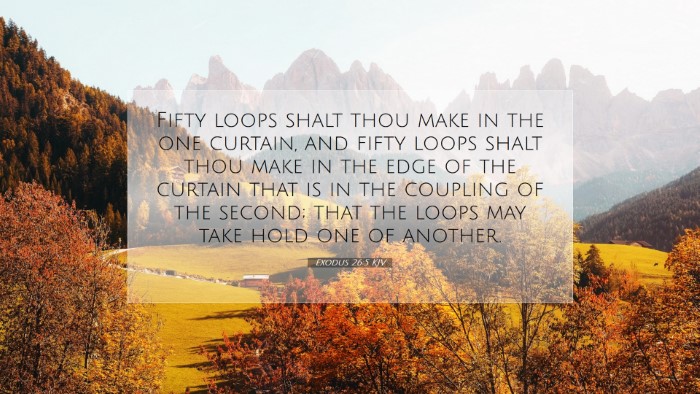Commentary on Exodus 26:5
Verse: "And thou shalt make the curtains of goats' hair for a tent over the tabernacle: eleven curtains shalt thou make."
Introduction
This verse is part of a larger section in the book of Exodus that details the instructions for building the Tabernacle, the dwelling place of God among His people. Throughout this passage, we see God's meticulous directions that emphasize the holiness of His presence and the need for His people to prepare a suitable dwelling for Him.
Significance of the Materials
The use of goats' hair is significant in several ways, as noted by various commentators.
- Symbolism of Goats: In biblical symbolism, goats often represent sin and sacrifice. By utilizing goats' hair, there is an implication of covering and atonement. Adam Clarke discusses the idea that the materials chosen symbolize the need for sacrifice to approach God's holiness.
- Durability and Utility: Albert Barnes remarks on the practical aspects of goats' hair as a durable material suitable for the tabernacle's covering, capable of withstanding various elements, emphasizing God's provision for His people.
- Sign of Humility: Matthew Henry points out that the humble material reflects the modest beginnings of the Israelites as wanderers in the desert and suggests God's willingness to dwell among His people in their lowly state.
Design of the Curtains
The instruction to make eleven curtains adds layers of meaning to their construction, as highlighted by various theologians.
- Number Eleven: Adam Clarke offers a view that the number eleven is significant, possibly indicating incompleteness or something divided, prompting the viewer to contemplate the necessity of a mediator between God and humanity.
- Arrangement of Curtains: Each curtain was to be joined together in a specific order, demonstrating the importance of divine order. Matthew Henry notes how these details reflect God's desire for unity among His people as they worship Him together under one tabernacle.
- Purpose of the Tent: The curtains serve not merely a functional purpose but also a spiritual one, illustrating the concept of God dwelling among His people, as echoed in various passages throughout Scripture (e.g., John 1:14).
Theological Implications
This seemingly simple verse holds profound theological implications central to the understanding of the tabernacle and God's relationship with Israel.
- God's Desire to Dwell with Man: Both Henry and Barnes emphasize that the entire structure of the tabernacle is to facilitate God's presence among His people, serving as a foreshadowing of Christ's incarnation where God took on flesh to dwell among humanity.
- Understanding the Holiness of God: The instructions for the materials and the design highlight God's holiness and the need for purity. As Clarke mentions, the setting apart of these materials points to the significant distance between the divine and the mundane.
- Foreshadowing Christ: As we examine the coverings of the tabernacle, we can see the foreshadowing of Christ as the ultimate covering for sin and the means through which a sinful humanity can be reconciled to a holy God, which is intricately discussed in the writings of many theologians.
Conclusion
Exodus 26:5 may seem like a straightforward design specification, but it encapsulates significant spiritual truths about God's relationship with His people, His provision, and the foreshadowing of redemption through Christ. The meticulous details provide insight into God's character and His desire to dwell in intimate relationship with humanity.
As we study this verse, may we be reminded of God's holiness, our need for atonement, and the joy of His presence among us.


